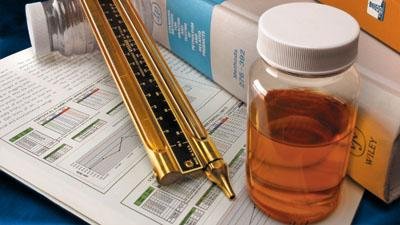Setting up Your Onsite Oil Analysis Test Facility – Pros & Cons
 When you require lubricant testing, you desire a location that offers convenient timings and quick results. Onsite laboratory testing and screening services not only minimize wait times for results but also decrease the cost related to visiting different locations for lab work.
When you require lubricant testing, you desire a location that offers convenient timings and quick results. Onsite laboratory testing and screening services not only minimize wait times for results but also decrease the cost related to visiting different locations for lab work.
When a company decides to initiate on-site oil analysis, obvious questions such as: “What tools and equipment are we going to use?” and “What types of tests do we want to perform on-site?” are typically asked. These questions are quickly answered with another question: “What kind of budget do we have for this project?”. In particular, having onsite oil analysis facility can significantly reduce the total turnaround time between sampling and condition-based maintenance recommendations that are required to keep equipment operating safely and efficiently.
Reasons for Onsite Analysis
The primary purpose of onsite oil analysis program is to be able to determine lubricant quality and machine conditions for emergent situations, helping to ensure that all safety-related and supporting equipment is maintained and available for operation.
In addition, offsite oil analysis can be costly and slow. While the costs for expedited oil analysis are insignificant compared to lost production costs, the fastest possible turnaround time may be insufficient to keep equipment operable and the plant online.
The application of onsite laboratory test outcomes in diagnostic decision making is an inherent part of recommendations. There are four primary valid reasons for considering a laboratory test:
- Diagnosis (to include or exclude a diagnosis)
- Monitoring (for example the impact of equipment condition)
- Screening (for example for inline condition monitoring)
- Research (to learn about the equipment and lubricant failure) Each of the laboratory test results must be understood within the context of your overall equipment health and should be utilized along with the remaining exams or tests.
Benefits of onsite Laboratory Testing and Monitoring
On-site, comprehensive laboratory testing offer a convenient means for you to obtain your required test results as quickly as possible. Onsite laboratory generate these five major benefits for equipments and practices.
- Prompt Diagnosis - The ability to perform lab tests onsite and quickly access the results during the laboratory diagnose or supervise an equipment condition immediately.
- Improved Equipment Engagement - Equipment obtain their test results during a laboratory analysis and view the results firsthand are more inclined towards being better engaged with their recommendations.
- Timely Decisions - Getting lab results onsite at an equipment location supports a start or adjust a timely action taking course for an equipment with a savior condition.
- Faster Prognosis - With instantly accessible lab results onsite at an equipment location, technicians can immediately direct a deteriorating case towards an emergency.
- Behavioral Counseling Opportunities - Equipment view their onsite lab results can get behavioural guidance from technicians including modifications to their operating conditions and more for managing their monitoring and maintain good condition.
An on-site oil analysis laboratory is a useful addition to the condition monitoring arsenal. However, users must be aware of the failure potential and the root causes that may be attributed to this, including incorrect instrumentation selection, incorrect test selection, poor personnel and information-flow management, and incorrect or no assimilation with a commercial laboratory. Understanding the pitfalls of embarking on such a project is vital to ensuring its success.
Sometimes budget may be a constraint in setting up an onsite test facility (Lab). In which case it is suggested that this may be set up in stages. Starting with basic test equipment like viscosity, moisture, patch test etc. These tests can provide indicative results on the condition of the lubricants and decision can be taken to filter or change the lubricant if required in time before the equipment damage takes place. These test equipment do not cost much and can be used by plant chemists / technicians easily. Advanced Diagnostic test equipment like particle counter, Ferrography etc. can be added later in stages.
